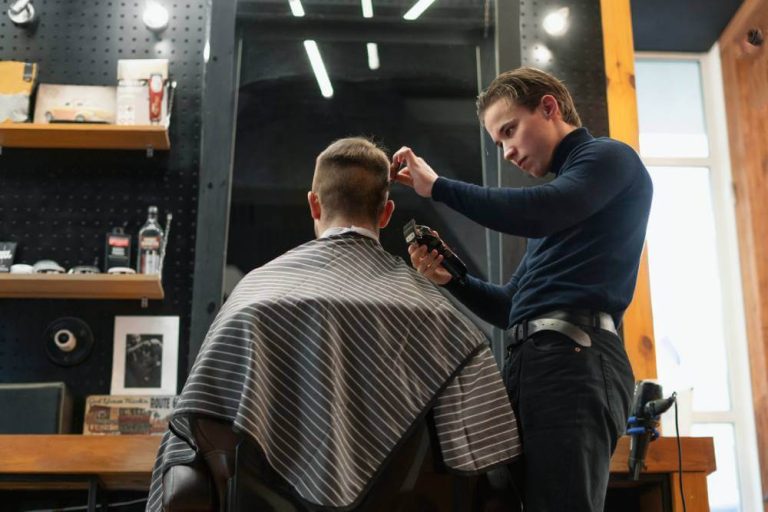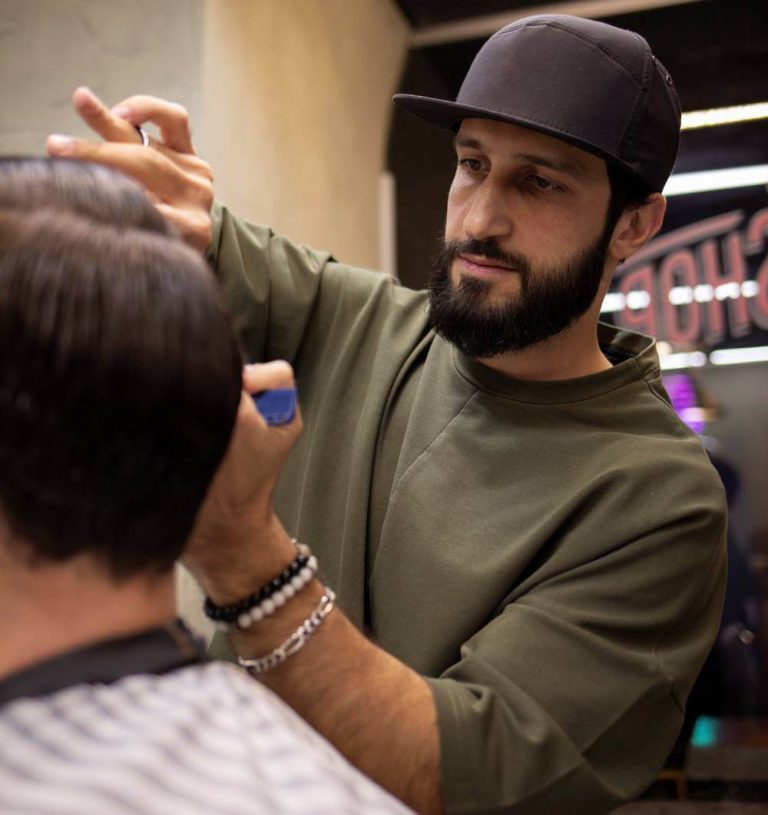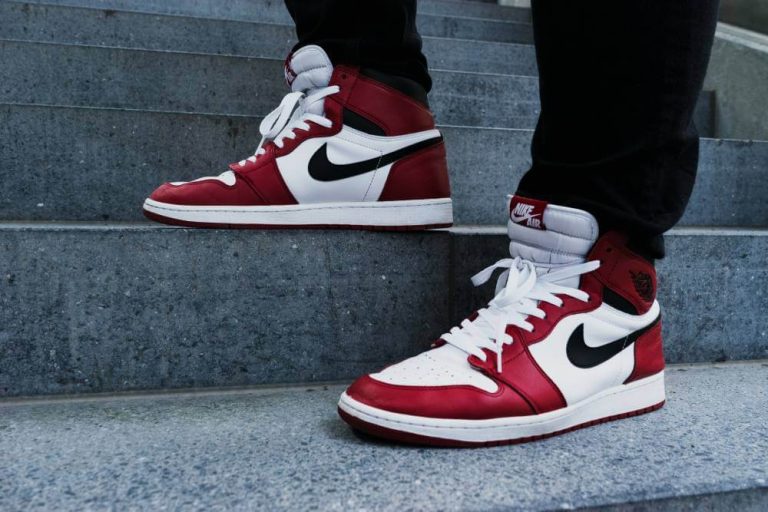In the last few years, men’s fashion has changed. The line between “streetwear” and high fashion has never been more blurred. Luxury fashion houses are teaming up with skatewear brands and putting hoodies and harness bags on runways that used to be reserved for sharp tailoring and trench coats.
Streetwear has gone global and is influencing fashion everywhere. Some say this is the end of the “streetwear” era as we know it. But the brands that started the movement are still killing it and staying true to themselves.
Stussy: The Original Streetwear Pioneer
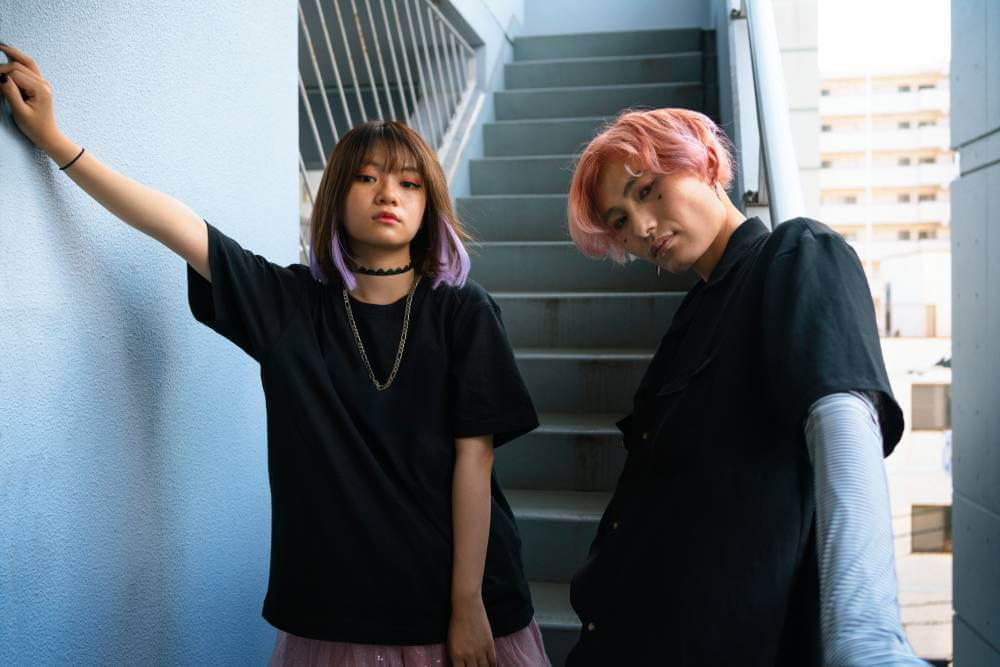
Streetwear as we know it today wouldn’t exist without Stussy. What started as a small line of graphic T-shirts from a Californian surfer has grown into one of the biggest fashion brands in the world.
Surf Culture Origins
Stussy’s story begins in the early 80s on the sun-kissed shores of Laguna Beach, California. Shawn Stussy, a talented surfboard shaper, would write his surname on his custom boards with a marker pen as a sort of signature. It was bold, it was different, and it stood out – just like the man himself. The hand-drawn logo would soon be on T-shirts that Stussy would sell out of his car trunk to local surfers, and a movement was born.
Surfboards to Streetwear
As the T-shirts took off, Stussy realized he had stumbled upon something bigger than the surf community. His relaxed, cool designs resonated with skaters, musicians, and the emerging youth culture of the 80s. What was once a surf brand rapidly became a global clothing brand and streetwear giant. The logo became iconic on hoodies, caps, and outerwear and became part of the broader streetwear culture.
Global & Streetwear
By the 90s, Stussy had gone global. The brand was everywhere, from Tokyo to London, and was a symbol of street style without borders. Its mix of relaxed surf-inspired designs with edgy urban aesthetics resonated with youth subcultures worldwide. Stussy was one of the first brands to bridge streetwear and high fashion and influence a generation of designers, artists, and musicians.
Legacy and Relevance
What sets Stussy apart is its ability to stay relevant and true to itself. In an era where many streetwear brands have come and gone, Stussy has remained iconic and continues to reinvent itself without losing its DNA. Whether collaborating with Nike on limited edition sneakers or on the streets of fashion capitals, Stussy is still influencing modern streetwear and staying true to its surf roots.
Why is Stussy Iconic?
Stussy’s simplicity is what has endured. The brand is a lifestyle – one of freedom, individuality, and creativity. Stussy created what streetwear has become today – style and substance that means more than just fashion but a way of life.
The North Face: From the Mountains to the Streets
At first glance you wouldn’t think to see The North Face on a list of streetwear giants. Known for its rugged, functional mountaineering gear, The North Face has made a surprising transition into streetwear. With strategic collaborations and clever designs, The North Face has become a streetwear staple without losing its outdoor heritage.
Mountaineering Origins, Streetwear Evolution
The North Face was founded in 1966 by Douglas Tompkins and Susie Tompkins to produce high-performance outdoor gear. Its jackets, backpacks, and sleeping bags became the go-to gear for serious climbers and explorers. But in recent years, The North Face has transitioned from alpine expeditions to the streets of fashion capitals and proved that function and fashion can coexist.
Collaborations with Supreme and Streetwear Icons
One of the reasons for The North Face’s streetwear success is its smart collaborations. The brand has teamed up with Supreme many times, creating limited edition brand collections that blend the functionality of outerwear with the style of streetwear. These collaborations often result in highly coveted “grail pieces” – items that streetwear enthusiasts will go to great lengths to get.
Other notable collaborations include Vans and MM6 Maison Margiela, which solidified The North Face as a must-have brand in street fashion.
Japanese “Purple Label” and “Black Series”
The North Face’s creative ventures don’t stop at Western markets. In Japan, its exclusive “Purple Label” line is a cult favorite among fashion-conscious consumers. With its urban styling and technical outdoor performance, Purple Label pieces are known for their clean silhouettes and high-quality materials, often designed in collaboration with fashion renegades like Kazuki Kuraishi.
The Black Series is where The North Face goes high fashion. This line showcases the brand’s innovative designs by combining its iconic outerwear with fashion-forward elements. The Black Series is a more experimental take on the classic North Face aesthetic, and utilitarianism meets high-end design.
Why is The North Face a Streetwear Staple?
The North Face is a streetwear favorite because it stays true to its roots while adapting to the changing fashion landscape. Whether you’re hiking a mountain or walking the streets, The North Face delivers pieces that perform everywhere. Its continued collaborations with streetwear legends and fashion-forward designers keep the brand relevant, stylish, and functional.
Undercover: Streetwear Meets High Fashion
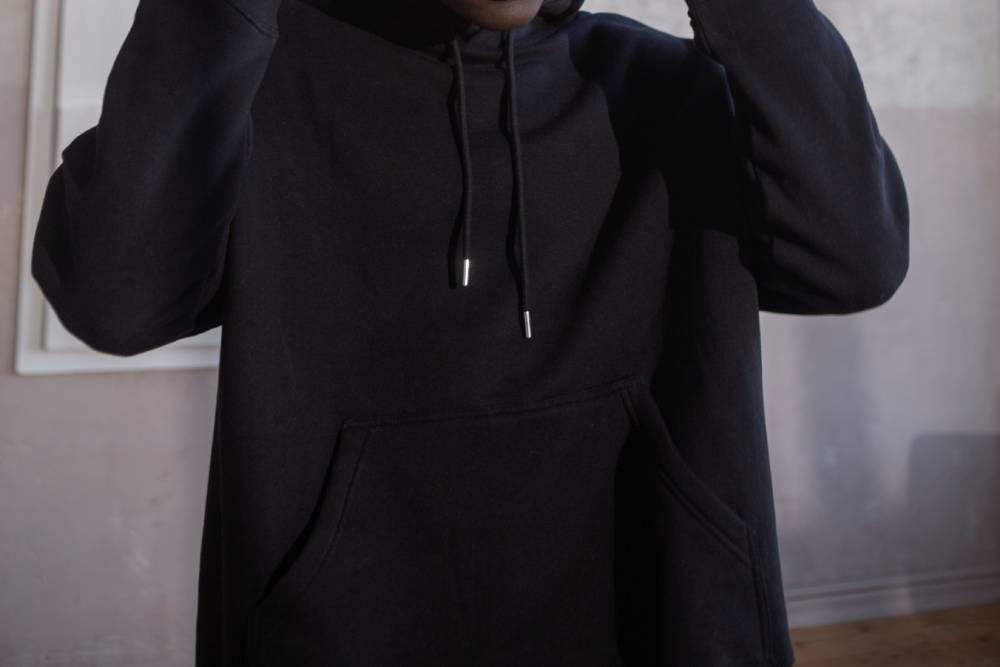
Undercover is a Japanese streetwear brand that has merged rebellious subcultures with high fashion. Founded by designer Jun Takahashi, Undercover has been at the forefront of fashion innovation, combining street style with avant-garde aesthetics and pushing the boundaries of what streetwear can be.
The Ura-Harajuku Movement and Punk Influences
Undercover first gained notoriety in the early 90s as part of Tokyo’s Ura-Harajuku scene – a subculture of underground fashion and rebellious youth culture. It was during this time that Takahashi developed his signature style, which was heavily influenced by the UK punk scene. This influence still runs deep in Undercover’s collections with raw, unconventional designs that evoke a punk ethos. Think graphic-heavy tees, distressed fabrics, and anarchic styling.
The brand was one of the first to merge streetwear and high fashion, paving the way for what we see today. Takahashi’s concept of “street couture” was a game changer and his early collections set the tone for the brand’s irreverent and artistic direction.
Collaborations with Nike: Gyakusou and Beyond
Undercover was already well established in streetwear and fashion circles but its collaborations with Nike took the brand to new levels. Undercover’s Gyakusou line, a running-focused collaboration with Nike, showed Takahashi’s ability to combine technical sportswear with fashion-forward design. The Gyakusou collection has become a must-have for athletes and fashion enthusiasts alike, high-performance gear with Undercover’s rebellious twist.
As well as Gyakusou Undercover has released numerous collaborative sneaker designs with Nike including the iconic React Element 87. These limited edition drops are highly sought after in the streetwear community, futuristic design with Takahashi’s avant garde twist.
Streetwear Meets High Fashion
One of Undercover’s key strengths is its ability to straddle high fashion while staying true to its streetwear roots. Takahashi’s runway shows are often celebrated for their artistry and conceptual themes, pushing the boundaries with experimental silhouettes and fabrics. But despite this high fashion approach, the brand remains connected to its streetwear heritage through its graphic tees, hoodies, and outerwear.
BAPE (A Bathing Ape): The Godfather of Japanese Streetwear
When it comes to Japanese streetwear, BAPE (A Bathing Ape) is one of the most famous and influential brands. Founded by DJ, producer, and fashion designer Nigo in 1993, BAPE has gone from its Tokyo roots to become a global symbol of bold and eccentric street fashion.
Origins and Global Success
Nigo founded BAPE in the Harajuku district of Tokyo, the fashion capital of Japan. Heavily influenced by pop art, pop culture, hip hop, and his own eclectic taste, Nigo created a brand that quickly gained attention for its unique and playful designs. The early adopters were drawn to its quirky motifs, bright colors, and exclusive drops, and a cult following was born.
BAPE was also one of the first brands to use limited edition product drops, creating a sense of exclusivity that fed the hype in the 90s and early 2000s. Collaborations with influential musicians and artists like Pharrell Williams solidified its position as a streetwear giant.
Signature Designs: Camo and the Shark Hoodie
One of BAPE’s most iconic designs is its camo print, which stands out from traditional camouflage with its bright colors and ape head logo hidden within the pattern. This print has been used across the brand’s product range, from hoodies and jackets to sneakers and accessories. It’s a BAPE staple.
Another signature piece is the shark hoodie with its oversized shark face and teeth around the hood. The weird and wonderful design was an instant hit and became one of BAPE’s most sought-after items. This over-the-top approach to streetwear design is part of what makes BAPE so unique.
Hip Hop Influence
BAPE’s rise to fame was closely tied to hip-hop culture. Nigo’s friendships with global hip-hop icons like Pharrell, Kanye West, and Jay-Z helped globalize the brand. These collaborations and co-signs introduced BAPE to the Western world, particularly in the US, where the brand became synonymous with streetwear and the early 2000s rap scene.
Pharrell’s partnership with Nigo led to the creation of Billionaire Boys Club and Ice Cream, further merging BAPE with hip hop and expanding its reach.
Streetwear Meets High Fashion
Like streetwear as a whole, BAPE has managed to merge street fashion and high fashion. In recent years, the brand has collaborated with luxury brands like Coach and Louis Vuitton and brought BAPE’s street flavor to high fashion.
These collaborations have kept BAPE relevant and redefined what streetwear can be. BAPE’s ability to straddle both worlds is a testament to its flexibility and timelessness in this ever-changing fashion landscape.
WTAPS: Japanese Streetwear with Military Precision
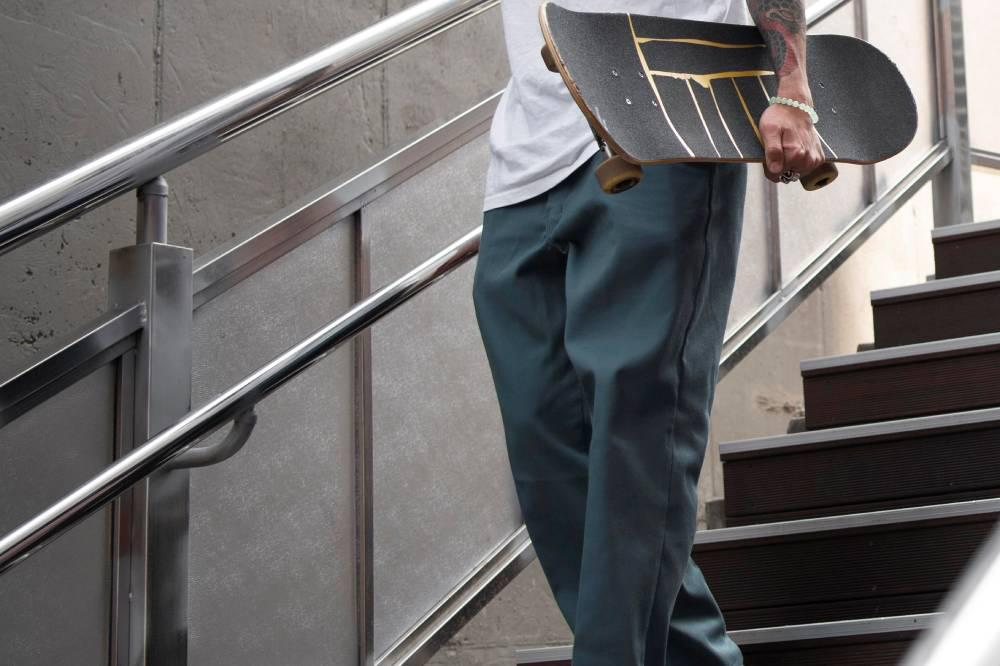
WTAPS (pronounced “double taps”) is a Japanese streetwear brand that combines military influence, utilitarian design, and workwear aesthetics with street appeal. Founded by designer Tetsu Nishiyama in 1996 WTAPS has carved out a place in the fashion world and is known for its functional yet stylish approach to clothing.
Military Roots and Functional Design
At the core of WTAPS is a strong military influence, reflected in the brand’s boxy silhouettes, baggy cargo pants, and robust outerwear. The name “double taps” itself is a military term, referring to the rapid firing of two shots in succession to ensure precision – a fitting metaphor for the brand’s sharp and well-executed designs.
WTAPS’ appeal lies in its functional approach to fashion. Many of its pieces are inspired by military wear, not just in design but also in functionality. Heavy-duty fabrics, oversized pockets, and durable construction mean WTAPS’ clothing is as useful as it is stylish.
Streetwear Meets Workwear
While military gear is the foundation of WTAPS’ design philosophy, the brand also draws heavily from workwear. This includes everything from chore jackets to heavy-duty boots, all of which fit into WTAPS’ overall aesthetic. The combination of workwear and streetwear has made the brand popular, especially among those who like the rugged, everyday look of functional fashion.
Signature Style: Box Silhouettes and Oversized Pieces
WTAPS is known for its silhouettes, which are relaxed, boxy, and oversized. Whether it’s a loose-fitting hoodie or a pair of baggy cargos, the brand’s cuts are all about comfort and ease of movement without sacrificing style. This has made WTAPS a brand that’s both practical and fashion-forward and appeals to streetwear enthusiasts who value functionality and aesthetics.
Ivy-League Meets Street
While WTAPS is rooted in military and workwear, the brand isn’t afraid to throw in the unexpected. Preppy Ivy-League influences sometimes pop up in WTAPS’ collections and add a Japanese twist to the classic collegiate style. You might find a varsity jacket or a pair of tailored chinos mixed in with the brand’s utilitarian offerings, making WTAPS a brand that’s hard to pin down stylistically but always interesting.
Cult Status and Global Recognition
Over the years, WTAPS has built a global following and street cred among Japanese streetwear and military fashion enthusiasts. The brand’s unique aesthetic and high-quality construction have put it alongside the likes of BAPE and NEIGHBORHOOD in the Japanese streetwear scene, and its collaborations with global brands have brought it to a wider audience.
The Hundreds: LA’s Streetwear Legacy
Founded in 2003 in LA, The Hundreds has carved out a space in the streetwear world and emerged as a major player during a key time in fashion. The brand was born in an era when streetwear was graphic tees, hoodies and laid back and far from the high fashion world we see today.
Back to Basics
The Hundreds is a nostalgic return to the roots of streetwear. At its core, the brand is about DIY culture and community and often draws from underground comics, skate, punk, and hip-hop that shaped its early days. Instead of chasing trends or collaborations, The Hundreds stays true to itself and creates quality garments that resonate with its loyal fans.
Graphic Tees and Everyday Essentials
One of the key elements of The Hundreds is its no-nonsense, graphic-driven apparel. The brand’s tees often feature bold and eye-catching designs that reflect LA street culture. From quirky graphics to thought-provoking slogans, each piece is a canvas for self-expression. Hundreds have mastered the art of creating pieces that are both stylish and conversation starters and connect the wearer to the culture around the brand.
Cultural Commentary and Community
Beyond clothing, The Hundreds is a cultural commentator, often injecting its collections with social commentary and references to current issues. This resonates with its audience and creates a sense of community and shared values. The brand collaborates with artists, musicians, and influencers who share its ethos and amplify its cultural relevance and authenticity.
Timeless vs Trendy
What makes The Hundreds different is its refusal to compromise its identity for trends. While other brands chase the latest fashion trends, The Hundreds stays true to classic streetwear. Its commitment to timeless designs means its pieces stay relevant year after year and appeal to both long-time fans and newcomers to the streetwear world.
Noah: Streetwear with a Conscience
Noah, founded by Brendon Babenzien, stands out in the crowded streetwear world by combining high-quality construction with a focus on sustainability and social awareness. After learning his trade at the legendary Supreme Babenzien wanted to create a brand that would merge the rawness of street culture with the sophistication of preppy. The result is a brand that speaks to consumers looking for thoughtful design and ethical production.
Style Fusion
At its core, Noah is a fusion of urban streetwear and preppy style. The brand offers a range of clothing from classic hoodies, caps, and logo tees to sports jackets, rugby shirts, and loafers. But it doesn’t stop there. You can find pieces that are timeless and elegant. This eclecticism appeals to a wide audience and allows you to express yourself while wearing high-quality, versatile pieces.
Sustainability
In an era of fast fashion, Noah prioritizes sustainability in its business. The brand uses eco-friendly materials and ethical production methods, so its garments have minimal environmental impact. By focusing on longevity and durability, Noah encourages consumers to invest in pieces that will last and not contribute to the disposable culture of the fashion industry.
Social Responsibility
Beyond sustainability, Noah also gets involved in various philanthropic efforts. The brand partners with organizations that address social and environmental issues and uses its platform to raise awareness and drive positive change. This commitment to social responsibility speaks to customers who want to buy from brands that share their values.
Seasonal Collections That Surprise
Each seasonal collection from Noah is designed to reflect its mission of style and substance. Expect to see unexpected items and collaborations that challenge the norms of streetwear. By pushing the boundaries of design while staying true to quality, Noah keeps its releases fresh and exciting for new and old fans alike.
Cav Empt: The Future of Streetwear
Cav Empt is a brand that goes against the grain of the mainstream, creating pieces that feel like they’ve been beamed in from the future. Co-founded by SK8THING a designer known for his graphic work with Nigo’s Human Made, Billionaire Boys Club and Ice Cream and music industry veteran Toby Feltwell this Japanese brand has carved out a space that appeals to the streetwear connoisseur.
Design Concept
At its heart, Cav Empt is a conceptual streetwear brand that combines art, technology, and culture. Each collection is a mix of graphics, silhouettes, and textiles, often with experimental prints and bold colorways that challenge the norms of fashion. The aesthetic is avant-garde, so if you want to stand out from the primary streetwear crowd, this is the brand for you.
Storytelling
What sets Cav Empt apart is the storytelling through fashion. The brand often incorporates narrative into its designs, drawing from science fiction to contemporary art. This considered curation results in pieces that look good and make you think and talk. Wearing Cav Empt is like wearing a piece of art. Each garment is a reflection of culture and style.
Quality & Innovation
Cav Empt also prioritizes quality. Each piece is designed and made with care, often using innovative materials to increase durability and comfort. This attention to quality means the garments look great and last. The brand’s functional streetwear approach is evident in its designs, which balance style and practicality.
Crossover
While Cav Empt is rooted in streetwear its design philosophy allows it to crossover into other fashion spaces. The brand has a following not just amongst streetwear enthusiasts but also within the high fashion community. This crossover is a sign of the brand’s ability to merge forward-thinking street style with avant-garde aesthetics, making it a versatile addition to your wardrobe.
KITH: The Definition of Collaborative Streetwear

KITH, founded by New York sneaker scene legend Ronnie Fieg, has gone from being a retail space to a powerhouse in the streetwear industry. Originally a boutique specializing in curated sneakers, KITH’s in-house label has made a name for itself with a unique blend of high fashion and street style, making it a must-know in modern fashion.
A Retail Experience Like No Other
At its heart, KITH is a lifestyle brand that’s all about the retail experience. Its flagship stores are designed to reflect the brand’s aesthetic and provide an immersive shopping environment. Each store often has exclusive drops and limited edition collaborations, so there’s always something new and exciting for sneakerheads and fashion enthusiasts. The stores are also community hubs, hosting events and collaborations that bring the streetwear community together.
High-Profile Collaborations
KITH has collaborated with some of the biggest names in sneaker and lifestyle. From New Balance and Nike to Bugaboo and Disney. Each collaboration brings something new and different, KITH’s style merged with the partner’s DNA.
New Balance: KITH’s New Balance collaborations are the stuff of legend, often selling out in minutes. The designs feature unique colorways and premium materials, setting the benchmark for sneaker collaborations.
Nike: KITH’s relationship with Nike is about reimagining classic silhouettes. The attention to detail and exclusivity has cemented KITH’s status in sneaker culture.
Bugaboo and Disney: KITH’s collaboration with Bugaboo to design stylish strollers is a departure from the norm. The Disney collaboration brings playful, nostalgic elements into streetwear for a wider audience.
Versatile Apparel Line
While KITH is known for sneakers, its apparel line shouldn’t be overlooked. The brand offers a wide range of clothing, including box logo hoodies, crewnecks, joggers, and more. Each piece is about quality, comfort, and style, making KITH apparel a staple in any streetwear enthusiast’s wardrobe. The designs are minimal branding and bold colorways so that you can wear them with anything.
The KITH Culture
KITH has created a culture that’s all about community and creativity. The brand collaborates with artists, musicians, and other cultural figures to solidify its position as a cultural influencer. KITH is also on social media, using Instagram to connect with fans and show new collections, collaborations, and lifestyle content.
CDG PLAY: The Accessible Side of Avant-garde Fashion
CDG PLAY is the streetwear sub-label of the Japanese fashion house Comme des Garçons. While Comme des Garçons (CDG) is known for its avant-garde designs and runway shows, CDG PLAY is the more accessible entry point for fashion enthusiasts and casual consumers.
A Playful Aesthetic
CDG PLAY’s signature is the bug-eyed heart logo. This has become an icon in streetwear. Designed by graphic designer Tadanori Yokoo, the logo is a simple heart with two big eyes. It’s charming and whimsical. It’s on a range of wardrobe staples like T-shirts, hoodies, and sweatshirts, making them into fashion pieces that are still casual.
Wardrobe Staples with a Twist
CDG PLAY reimagines classic silhouettes with unique designs and bold branding. Here are the essentials:
T-Shirts: The classic crew neck T-shirt with the heart logo is a CDG PLAY staple. Available in various colors and styles, you can wear them for casual or layered under jackets.
Hoodies: Comfortable and stylish CDG PLAY hoodies feature the heart logo or other graphics. Relaxed fit and for everyday wear, the essence of streetwear.
Breton Tops: CDG PLAY puts its own spin on the classic Breton striped top with the heart logo. A fresh and modern twist in a classic style.
Quality Meets Creativity
Despite the casual vibe, CDG PLAY still prioritizes quality and craftsmanship. Each piece is made with attention to detail, so you get style, comfort, and durability. The minimalism with quirky design elements makes it stand out in the streetwear crowd.
Cultural Relevance
CDG PLAY has impacted streetwear culture, bridging the gap between high fashion and everyday wear. It appeals to a wide range of people, from fashion enthusiasts who love avant-garde to casual consumers who just want to add a bit of uniqueness to their wardrobe.
The brand has a loyal following. Fans are often spotted wearing the heart logo in urban cities around the world. The playful yet refined CDG PLAY is for those who want to express themselves through fashion without sacrificing comfort.


